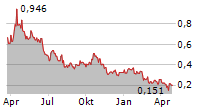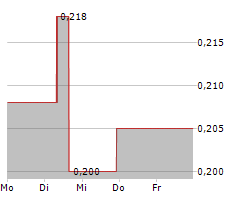Vancouver, British Columbia--(Newsfile Corp. - June 5, 2025) - Great Pacific Gold Corp. (TSXV: GPAC) (OTCQX: FSXLF) (FSE: V3H) ("Great Pacific Gold," "GPAC," or the "Company") is providing an update on its exploration activities at the Wild Dog Project ("Wild Dog" or the "Project"), located on the island of New Britain, in the province of East New Britain, Papua New Guinea ("PNG").
The recently commenced drill program is designed to test high-priority targets over a 3km strike length within the mineralized corridor with approximately 2,500 metres of diamond drilling across 16 planned holes. Prior to the start of drilling, the Wild Dog corridor was flown with MobileMT geophysics, which identified a strong conductivity trend extending over 15km in strike and to depths exceeding 1,000 metres (see news release dated May 7, 2025).
Key Highlights From Current Drilling:
- Hole WDG-02 targeted sulphide mineralization beneath the historic Central Oxide Pit - an area previously mined for high-grade oxide gold and considered prospective for open-pit development (Figure 1).
- WDG-02 intercepted:
- 7.0 meters @ 10.3 g/t AuEq (5.5 g/t Au and 3.1% Cu) from 65.0m;
- including 2.0 meters @ 14.3 g/t AuEq (10.7 g/t Au and 2.3% Cu) from 65.0m.
- WDG-03 was drilled 200m south of WDG-02 and targeted sulphide mineralization beneath the historic Southern Oxide Pit. The hole ended at 124m and intercepted multiple intervals of strongly shattered breccia with intense phyllic alteration, grey sulphide and quartz veining, including the main Wild Dog vein structure. Assay results are pending.
- WDG-04 is underway and being drilled from the same pad as WDG-03, targeting a follow up intercept with the main Wild Dog vein structure.
"The first drill results from our Phase 1 drill program at Wild Dog did not disappoint," stated Greg McCunn, CEO. "We now have a drill rig on the ground, a highly experienced technical team, and the infrastructure support in place to explore the potential of this system. We anticipate steady news flow from our drilling program over the coming months as we systematically test about 10% of the overall 15km Wild Dog structural corridor with our planned Phase 1 drilling."
Callum Spink, Vice President Exploration said, "Intersecting high-grade copper-gold hydrothermal breccia in the first hole is exactly the kind of result we hoped for as we get started on this exciting campaign. We believe we have intercepted the main Wild Dog vein in WDG-03 and we are targeting a further step out in the main vein with WDG-04, which is underway."
A cross section of the geology and the key assay results from WDG-02 are shown in Figure 2 and a complete set of assay results is shown in Table 3.
Results
To-date, the Company has completed three drill holes and Wild Dog, with a fourth in progress. Details of the drilling are shown in Table 1.
Table 1 Wild Dog Drill Hole Details (PNG94 UTM coordinates)
| Hole ID | Easting | Northing | RL | Dip | Azi | Max Depth (m) | Status |
| WDG-01 | 394358.3 | 9488853.5 | 945 | -50 | 115 | 40.1 | Abandoned |
| WDG-02 | 394426.0 | 9489024.2 | 900 | -53 | 050 | 124.6 | Completed |
| WDG-03 | 394384.9 | 9488926.5 | 924 | -50 | 053 | 127.6 | Completed |
| WDG-04 | 394384.8 | 9488926.5 | 924 | -50 | 75 | In-progress |
Drill hole WDG-01 encountered challenging ground conditions with areas of core loss, highlighting the intensity of the alteration and structural complexity of the Wild Dog system. These conditions prompted rapid refinement of drilling techniques, including the adoption of PQ-sized drilling, improved drilling fluids and revised operational technics tailored to the local geology. A post-hole GPS check revealed a minor offset from the planned collar position. As such, WDG-01 is expected to be redrilled later in the program to capture the intended target.
Subsequent holes have shown steady improvement in core recovery, with WDG-02 encountering fewer issues and WDG-03 and WDG-04 now progressing with strong recovery rates. The first batch of assay results from WDG-02 are shown in Table 2.
Table 2 Wild Dog Drill Hole Key Assay Results
| Hole ID | From (m) | To (m) | Interval* (m) | Gold (g/t) | Copper (%) | Gold Eq.** (g/t) |
| WDG-02 | 65.0 | 72.0 | 7.0 | 5.5 | 3.1 | 10.3 |
| including | 65.0 | 67.0 | 2.0 | 10.7 | 2.3 | 14.25 |
* Drill highlights presented above are core lengths (not true widths).
** Gold equivalent (AuEq) exploration results are calculated using longer-term commodity prices with a copper price of US$4.50/lb, a silver price of US$27.5/oz and a gold price of US$2,000/oz.
WDG-02 Geology
Diamond drill hole WDG-02 was collared in weathered andesite which persisted down the hole to approximately 5 meters. Fresh rock began at 10m and was composed of predominantly lapilli tuff and volcanoclastic conglomerate. From 41.1 meters to 46.6 meters the drilling intersected pervasive silicification with dark silica veining before transitioning back to massive tuff from 46.6 meters to 55.3 meters. Hydrothermal breccia was first intersected at 55.3 meters with the first 9.7 meters to 65 meters downhole having minor occurrences of black sulphide with chalcopyrite.
From 65 meters to 72 meters (7.0 meters) the core showed intense type 3 vein structure with black sulphide veining and coarse chalcopyrite and bornite. Gold grade averaged 5.5 g/t over this interval with 3.1% copper for a gold equivalent of 10.3 g/t.

WDG-02 64-67m coarse chalcopyrite and bornite.
To view an enhanced version of this graphic, please visit:
https://images.newsfilecorp.com/files/11018/254581_greatpacific1en.jpg
From 72m through 93.1m, drilling intercepted a mix of hydrothermal breccia and massive tuff before entering a second zone of hydrothermal breccia with dark sulphides and both fine grained and coarse chalcopyrite from 93.1m to 99.1m. Generally, core recovery was poor in this section with the ground highly altered.

WDG-02 79m hydrothermal breccia with dark sulphidic quartz.
To view an enhanced version of this graphic, please visit:
https://images.newsfilecorp.com/files/11018/254581_greatpacific2en.jpg

WDG-02 94.6m Banded white-grey quartz vein.
To view an enhanced version of this graphic, please visit:
https://images.newsfilecorp.com/files/11018/254581_greatpacific3en.jpg
From 99.1m to 105m, drilling encountered a fault structure / void where no core was recovered before entering back into hydrothermal breccia from 105.1m to 110m. The intercept contained dark suphides with traces of chalcopyrite.

WDG-02 105.1m banded grey quartz.
To view an enhanced version of this graphic, please visit:
https://images.newsfilecorp.com/files/11018/254581_greatpacific4en.jpg
For 110m through to the end-of-hole at 124.6m, the drill core consisted mainly of tuff with some minor brecciated material and coarse pyrite.
On behalf of Great Pacific Gold
Greg McCunn, Chief Executive Officer and Director
For further information visit gpacgold.com or contact:
Email: info@gpacgold.com
Tel: +1 778 262 2331
Qualified Person
The technical content of this news release has been reviewed, verified and approved by Callum Spink, the Company's Vice President, Exploration, who is a member of the Australian Institute of Geoscientists, MAIG, and a Qualified Person as defined by National Instrument NI 43-101 Standards of Disclosure for Mineral Projects. Mr. Spink is responsible for the technical content of this news release.
Quality assurance/quality control
The Company follows industry-recognized standards of Best Practice and Quality Assurance/Quality Control. Samples were submitted to Intertek Minerals Ltd. (ISO: 9001), located in Lae, Papua New Guinea in sealed in poly-weave bags using single use tie-locks, thereby ensuring chain of custody, for fire assay and ICP analysis. To date all batches have passed QAQC within acceptable tolerance limits. All diamond holes were drilled predominantly in HQ and PQ diameter. Core recovery was 83% for WDG-02.

Figure 1 Proposed Phase I drill program at Sinivit - Kavasuki targets, Wild Dog structural corridor.
To view an enhanced version of this graphic, please visit:
https://images.newsfilecorp.com/files/11018/254581_greatpacific5en.jpg

Figure 2 Cross section showing WDG-02 geology and key intercepts.
To view an enhanced version of this graphic, please visit:
https://images.newsfilecorp.com/files/11018/254581_greatpacific06en.jpg

Table 3 WDG-02 Complete Assay Results
To view an enhanced version of this graphic, please visit:
https://images.newsfilecorp.com/files/11018/254581_greatpacific7en.jpg
About Great Pacific Gold
Great Pacific Gold has a portfolio of exploration-stage projects in Papua New Guinea ("PNG"). The Company is focused on developing gold-copper resources from its highly prospective land packages. Its core projects include:
- Kesar Project: located in the Eastern Highlands province of PNG and contiguous with the mine tenements of K92 Mining Inc. ("K92"), the Kesar Project is a greenfield exploration project with several high-priority targets in close proximity to the property boundary with K92. Multiple epithermal veins at Kesar are on strike and have the same orientation as key K92 deposits, such as Kora. Exploration work to date by the Company at the Kesar Project has shown that these veins have high grades of gold present in outcrop and very elevated gold in soil grades, coincident with aeromagnetic highs. The Company is carrying out an ongoing diamond drill program on key target areas at the Kesar Project.
- Wild Dog Project: located in the East New Britain province of PNG, the Wild Dog Project is a brownfield exploration project with a history of small-scale gold mining. The Wild Dog Project contains numerous epithermal and porphyry hydrothermal-magmatic targets evidenced by previous exploration and operations. The Company completed a road refurbishment in August 2024 and baseline environmental work in Q4 2024. In Q1 2025, the Company began preparing for a drilling program with camp and infrastructure being established, airborne geophysics (MobileMT) survey completed and a geological team in place. A first phase of diamond drilling is underway on the property.
- Arau Project: located in the Eastern Highlands province of PNG, the Arau Project contains the highly prospective Mt. Victor exploration target with potential for a high sulphidation epithermal gold-base metal deposit. A Phase 1 Reverse Circulation drilling program was completed at Mt. Victor in August 2024, with encouraging results. The Arau Project includes the Elandora licence, which also contains various epithermal and copper-gold porphyry targets.
The Company also holds the Tinga Valley Project in PNG.
Forward-Looking Statements
Information set forth in this news release contains forward-looking statements that are based on assumptions as of the date of this news release. These statements reflect management's current estimates, beliefs, intentions and expectations. They are not guarantees of future performance. Great Pacific Gold cautions that all forward-looking statements are inherently uncertain and that actual performance may be affected by many material factors, many of which are beyond their respective control. Such factors include, among other things: risks and uncertainties relating to Great Pacific Gold's limited operating history, its exploration and development activities on its mineral properties and the need to comply with environmental and governmental regulations. Accordingly, actual and future events, conditions and results may differ materially from the estimates, beliefs, intentions and expectations expressed or implied in the forward-looking information. Except as required under applicable securities legislation, Great Pacific Gold does not undertake to publicly update or revise forward-looking information.
Mineralization at the properties held by K92 Mining is not necessarily indicative of mineralization at the Kesar Project.
Neither TSX Venture Exchange nor its Regulation Services Provider (as that term is defined in the policies of the TSX Venture Exchange) accepts responsibility for the adequacy or accuracy of this release.

To view the source version of this press release, please visit https://www.newsfilecorp.com/release/254581
SOURCE: Great Pacific Gold Corp.



